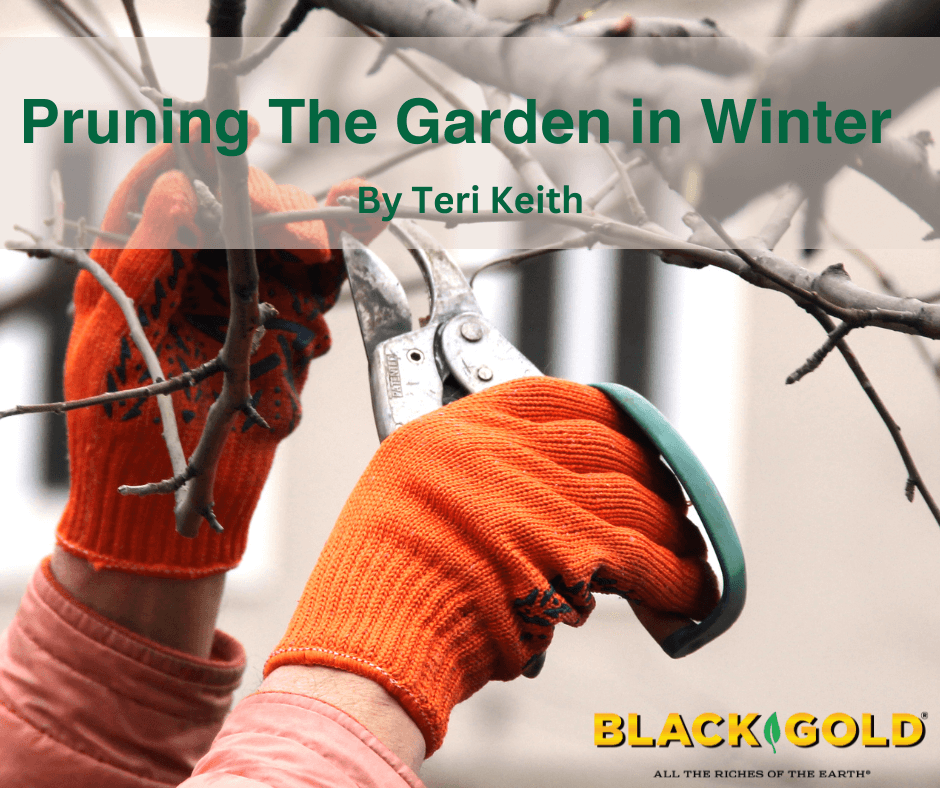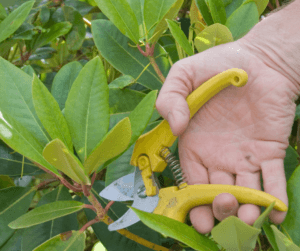
As for me, I believe that pruning is without doubt the biggest (dreadfulest) but most important job in the winter garden. Young trees and shrubs need pruning then while the branches are bare. The rules for pruning flowering shrubs depends on when they bloom. Spring blooming shrubs (i.e. quince and viburnums that bloom on last year’s wood should never be cut in winter. But only after they bloom. Summer and fall blooming shrubs such as Hydrangeas will bloom on new wood and can then be cut to the ground in winter.
General Pruning Rules

The first step is to remove all dead wood at its base. Then look to see if any branches are crossing and rubbing together. If you find crossing branches, cut one off leaving the best branch to grow. The next step for almost all non-evergreen shrubs is to cut one-third of the oldest branches to the ground every three years. This will ensure a new crop of younger shoots each year and help to eliminate pests that often attack the old wood first. A perfect example of this is the lilac. A common mistake I have seen is to cut some shrubs into forms that are unnatural to their basic shape. The worst offenders try to prune forsythia into shapes such as globes or rectangles. There again, give forsythias room to spread and follow the three-year cycle. If you have a small area buy a small shrub to fill it. There are a few slow-growing shrubs that do not need pruning at all, as far as its shape is concerned. The most common plant in our area is the Star Magnolia (Magnolia stellata). Except for dead wood and rubbing branches leave it alone.
Pruning Winter Evergreens

Pruning rhododendrons and azaleas and is a whole different story. There is a difference between them relating to pruning, other than flower, leaf, and shrub size. The difference is where the flower buds are located on the branch and when to prune. Rhododendron flowers are found just above the leaf rosette and pruning consists of removing the old flowers, after spring blooming, while not hurting the leaf rosette just below it. That is where next year’s buds will form. Aside from removing dead wood, never prune them in winter for fear of removing their spring flowers.
Azaleas, on the other hand, form new buds all along the branch, so they will tolerate some light winter pruning. Just remove any out-of-place branches, but not all the way back. Then you will have new flowers next spring.
Remember both plants require acidic soil. If your plants start to look weak or yellow you need a soil additive. Copperas (hydrated ferrous sulfate) an inexpensive powder comes in small bags. Follow the instructions and add to a liquid mix for acid-loving plants.
Pruning Roses

Roses are in a group by themselves. The main rule is to get rid of the old wood to discourage pests and encourage new growth (= more roses). There are two groups of roses, one that blooms on last year’s wood and one that blooms on this year’s new growth. With both groups remove the oldest and weakest canes. The oldest canes tend to be dark brown and woody. They need to go. The new-growth roses should have one-third of all old branches cut to the ground to keep the plant from pouring energy into maintaining old growth, and it should be done in the very early spring just when the buds begin to swell. For a fuller-looking plant cut some of the inward-growing branches to open up the center. For roses that bloom only on one-year-old wood (and I do not think there are many of these left) look at the stems. They should be brownish-green. Leave them and cut out anything older, but be sure to let new growth come along for next year. (Article: When is the Best Time to Prune Roses)
I also caution against the dreaded rose rosette virus. (Article: Best Diseases-Resistant Roses) If you see any misshapen or oddly colored growth dig up the plant and burn it or put it into a large plastic bag to put in the trash. Even if everything looks okay douse your pruners with 70% Isopropyl Alcohol between each rose. I encourage everyone to go online and see what bad growth looks like.
I also recommend going online to see the gorgeous new varieties of all the plants I have talked about, for example, Hydrangea paniculata images and a world of gorgeous shrubs will appear.
I hope I have given you enough work to keep you out of trouble and I haven’t even gotten to young trees. So get going and happy gardening.
